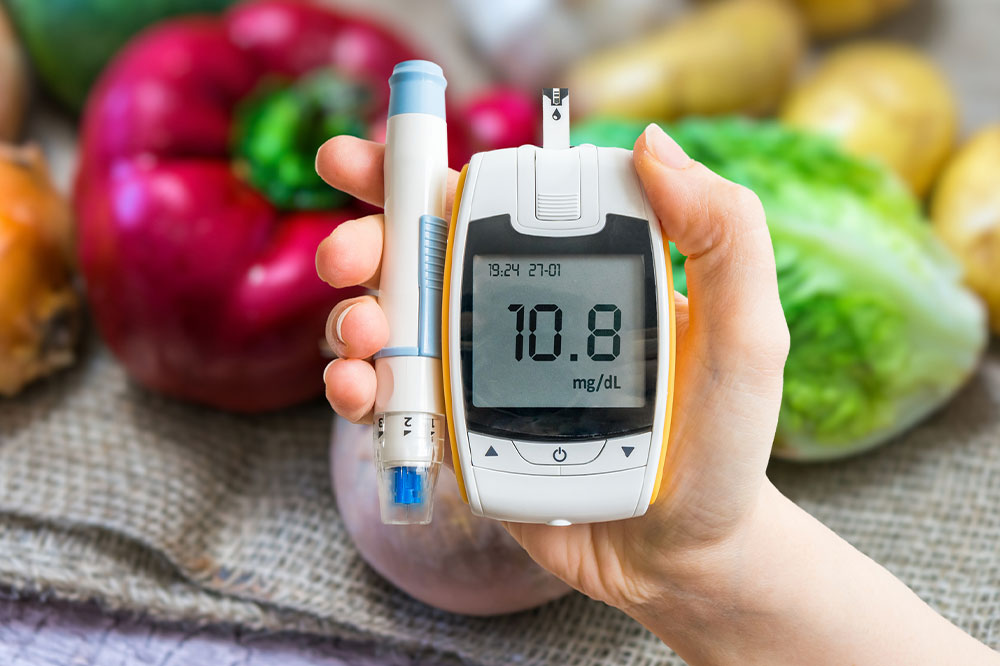
Diabetes – Types, signs, and management options
Diabetes is a condition that occurs when the body is unable to process blood sugar. This happens because either the pancreas does not produce enough insulin or the cells do not effectively use the secreted hormone. This further elevates the blood sugar levels in the bloodstream leading to severe conditions like vision loss, kidney failure, or heart disease. Here are the signs, causes, and treatment of diabetes you should be aware of.
Diabetes types
- Type 1 diabetes
Pancreas either fails to produce insulin or secrete it in small amounts. Patients experience symptoms that tend to come very quickly and are severe. - Type 2 diabetes
This develops due to the inefficiency of the cells to utilize insulin. People may not notice any symptoms as it develops slowly.
There might be no symptoms in women with gestational diabetes.
Signs and symptoms of diabetes common to both types include:
- Increased thirst
Patients can feel more thirsty than usual. - Frequent urination
Diabetes can cause a person to urinate more often. - Extreme fatigue
People with diabetes may feel extremely tired and weak. - Blurred vision
Abnormal blood sugar levels can cause blurry vision. - Numbness or pins and needles sensation on hands or feet
Another symptom of diabetes is a tingling sensation in the hands or feet. - Slow-healing wounds
People with diabetes take a long time to heal any cuts or bruises.
Diabetes causes
The causes of diabetes vary for each type. When the immune system attacks and destroys the insulin-producing cells in the pancreas it leads to type 1 diabetes. This can happen due to genes or environmental factors such as a viral infection.
Type 2 diabetes and prediabetes are caused by several factors, like:
- Insulin resistance
In Type 2 diabetes, the cells become resistant to insulin, and glucose cannot reach those cells properly. The pancreas works to produce more insulin to help glucose enter the cells. It stays in the bloodstream and raises blood sugar levels. - Genes
Diabetes also tends to run in families. Certain genes make family members more likely to develop type 2 diabetes. - Hormonal imbalances
Hormonal changes in pregnant women can interfere with blood sugar levels resulting in gestational diabetes. Certain other conditions, such as Cushing’s syndrome, acromegaly, or hyperthyroidism, may also cause diabetes. - Pancreatic damage
People who have physical damage to the pancreas due to surgery or injury may develop diabetes.
Treatment options
People with Type 1 diabetes require insulin to manage the condition. Type 2 diabetes treatment mainly involves adopting a healthy lifestyle.
Healthy eating
A healthy, well-balanced meal plan can greatly impact your blood sugar. Some of the foods to help with diabetes include:
- Avocados
- Broccoli
- Cabbage
- Cauliflower
- Tomatoes
- Zucchini
- Nuts and seeds
- Natural oils like olive oil, coconut oil, and avocado oil
- Probiotics such as Greek yogurt.
Several natural diabetes remedies may also help balance your blood sugar levels. These include aloe vera, fenugreek seeds, cinnamon, and apple cider vinegar.
- Exercise
People with diabetes should daily get about 30 minutes of moderate physical activity. Brisk walking, swimming, or cycling are great ways to manage blood sugar levels.
Tracking and monitoring your blood glucose levels is important when you have type 1 or 2 diabetes. Untreated conditions can lead to serious complications such as heart disease, neuropathy, nephropathy, retinopathy, and more.



